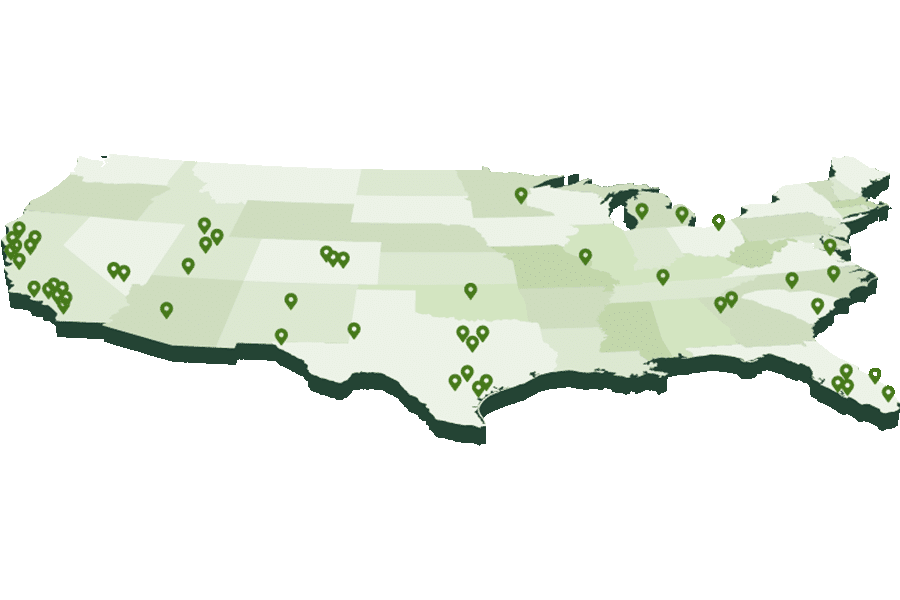Infill
Why Infill for Artificial Grass?
You may periodically hear someone claim that their artificial grass does not require infill or a customer may inquire about a non-infilled artificial grass. The reality is that by their definition ALL modern artificial grasses designed for landscaping applications are non-infilled grasses (including Purchase Green’s complete product line with the exception of the PG FIFA Diamond 40). However, when they are making this claim they are simply referring to artificial grass ballast and the ability of the fiber to stand up without infill. Most landscaping grasses are sufficiently dense and are constructed with a thatch (a curly fiber) that supports the taller fibers and helps them to stand up without infill in light traffic applications. However, Purchase Green (as do most national distributors of artificial grass) recommends infill even in these “No Infill” grasses in a modest amount of 1 lb. per square foot Why do we recommend this? Because artificial grass infill serves three primary purposes:
1. To protect the primary backing from UV exposure
- To help articulate this we use the analogy of a weed barrier. If you take a 20-year weed barrier and put it out in the sun without any covering (e.g. mulch, rock or ground cover) it will only last about 5 years – the general assumption in the 20-year rating provided by the manufacturer is that the weed barrier will be covered with something. The backing of artificial grass is essentially a very durable, very thick commercial grade weed barrier – now it is not uncovered like the weed barrier in the example above because of the grass fibers BUT coating the primary backing with infill adds protection which helps to extend the useful life of your artificial grass product.
- An additional benefit to the protection of the primary backing is that the addition of 1 lb. per square foot of a sand or sand-like infill will change the fire rating from a Class 2 to a Class 1 rating in most instances, making it suitable for applications inside buildings.
- As a general rule, 1 lb. per square foot is sufficient to help accomplish the objective of protecting the primary backing from UV exposure.
2. To add weight
- Artificial grass is like carpet in that it will expand and contract with changes in temperature. Now we already combat this by producing our products with industry leading primary and secondary backings to ensure dimensional stability. However, we also rely on infill as another tool to assist in dealing with expansion. The addition of weight in conjunction with using a sufficient number of nails helps to ensure your artificial grass doesn’t end up looking like carpet that needs to be stretched.
- The use of infill to add weight is particularly important when artificial grass is installed over a non-permeable sub-base such as concrete or asphalt since you don’t have the ability to install a grid of nails but rather typically have to use an industrial tape or glue.
- As a general rule, 1 lb. per square foot is sufficient to help accomplish the objective of adding weight.
3. To add ballast
- By “adding ballast” we mean you are helping support the fibers against matting down and the resulting wear patterns. Another way to describe this is to say infill helps to improve the “memory” of the fibers.
- The amount of infill that needs to be added to provide the necessary ballast is a function of three things: The density of your artificial grass (gauge, stitch rate, and fiber DTEX or fiber thickness), the pile height of your artificial grass, and the expected foot traffic.
Most residential applications (front yards, back yards) are considered light traffic and 1 lb. per square foot of infill will likely be sufficient. For heavy commercial applications such as a commercial playground or a path that gets heavily used would require more infill to keep the artificial grass from matting down. The specific amount needed varies based on three factors: The type of infill you use, the type of grass, and the expected foot traffic. Here are some examples:
- High School football field using a traditional sports turf in a 2.25” pile height uses 12 lb. of infill per square foot (4 lbs. of sand and 8 lbs. of rubber)
- An indoor soccer field using our Southwestern Sod Sport (a short but very dense artificial grass) will use 2 lbs. per square foot of silica sand or 1 lb. of sand + 1 lb. of rubber per square foot
- A commercial playground trying to achieve an 8’ Critical Fall Height (CFH) using Purchase Green’s Southwestern Sod (1.6” pile height, 61 oz. face weight) would use 2.5 to 3 lbs. per square foot of #16 silica, Zeolite, or Mellowfill.
- When trying to figure out how much infill is required for a heavy traffic application, a good rule of thumb is that you want to install sufficient infill such that all but the top 1/2” to 3/4” of the fiber is fully covered with infill.
Infill Types
Good
Silica Sand
Advantages – it accomplishes the three primary needs of infill and it is the least expensive.
Grit Size – this is a measurement of the size of the grain. The lower the number the bigger the grain. As an example, #16 silica sand has bigger grains than #30 sand.
- #16 Silica (50 lb. bag) – used for artificial grass lawns and artificial sports fields (although usually in conjunction with crumb rubber for sports fields in a 30% to 70% ratio by volume). Carries a Proposition 65 warning label.
- #30 Silica (50 lb. bag) – used for Purchase Green’s textured Polyethylene (PE) putting greens because of its smaller grain size which is necessary to be able to work it into the product since the putting green is very dense. Carries a Proposition 65 warning label.
When used on a putting green we recommend 1 to 1.5 lbs. per square foot on the 1/2” putting green and 1.5 to 2 lb. per square foot on the 3/4” putting green to achieve a STIMP rating of 10 to 11.
We recommend top dressing it with the 16/30 MellowFill at 1/4 lb. per square foot.
Better
#16 Green Acrylic Sand (50 lb. bags) – used for artificial grass lawns and is essentially the #16 silica listed above, but painted green. In the good/better/best spectrum it is the “better.” Carries a Proposition 65 warning label.
Zeolite (50 lb. bags) – this is used as an infill for pet applications. Zeolite is primarily used as an artificial grass infill for its odor reducing capabilities. Zeolite is a negatively charged, honeycomb-shaped molecular structure which absorbs liquids and gases like a magnet to prevent ammonia from forming a gas. (The ammonia buildup in pet urine is what you typically associate with the smell.) This molecular structure holds the ammonia until the sodium ions found in rain water release the magnetic ability which forces the odor causing bacteria down into the ground ultimately “flushing out” the ammonia smell. The purity rate is the key component in the ability of the Zeolite infill to perform its intended function as an artificial grass infill. A maintenance item to pay attention to when using a Zeolite infill is that it is best NOT to flush your turf from a garden hose when using zeolite for urine odor control because the hose water is usually filtered and will end up being encapsulated in the Zeolite granule in lieu of the urine.
Zeodorizer is another infill meant to eliminate pet odor. It neutralizes, traps, and removes odors and bacteria from animal waste. Zeodorizer has significantly less fines/dust than the leading competitors and does not breakdown over time. It contains zeolite, and cools the surface as it releases absorbed moisture into the turf.
Best
MellowFill 12/20 with Anti-Microbes (50 lb. bags) – premium product used for artificial grass lawns and artificial sports fields. Strongly recommended for artificial lawn installations in pet areas. MellowFill is infused with (Zinc, ZPT, ZOE) anti-fungal protection. This fungastatic agent inhibits growth of mildew and algae. This product’s unique biocide chemistry controls odors caused by mildew, mold fungus, and algae and significantly reduces the odor caused by ammonia buildup in pet urine. This is our highest-quality infill option so it is a little pricier than our other options. MellowFill also keeps artificial grass cooler to the touch than other infills such as crumb rubber and silica sand.
MellowFill 16/30 with Anti-Microbes (50 lb. bags) – this product comes with the same features and benefits as the 12/20 but because of the smaller grain size it is designed primarily as a top dressing on artificial grass putting greens
Why We Believe MellowFill is the Best Product
a) MellowFill prevents the ammonia buildup in pet urine while Zeolite simply “captures” the ammonia and then releases it when it rains. Additionally, any impurities in rain or hose water will reduce the effectiveness of Zeolite. So will a lack of rain.
b) While Zeolite is effective at reducing pet odor, because of its mesh size it tends to be more susceptible to compaction than MellowFill and is not as effective at providing ballast.



